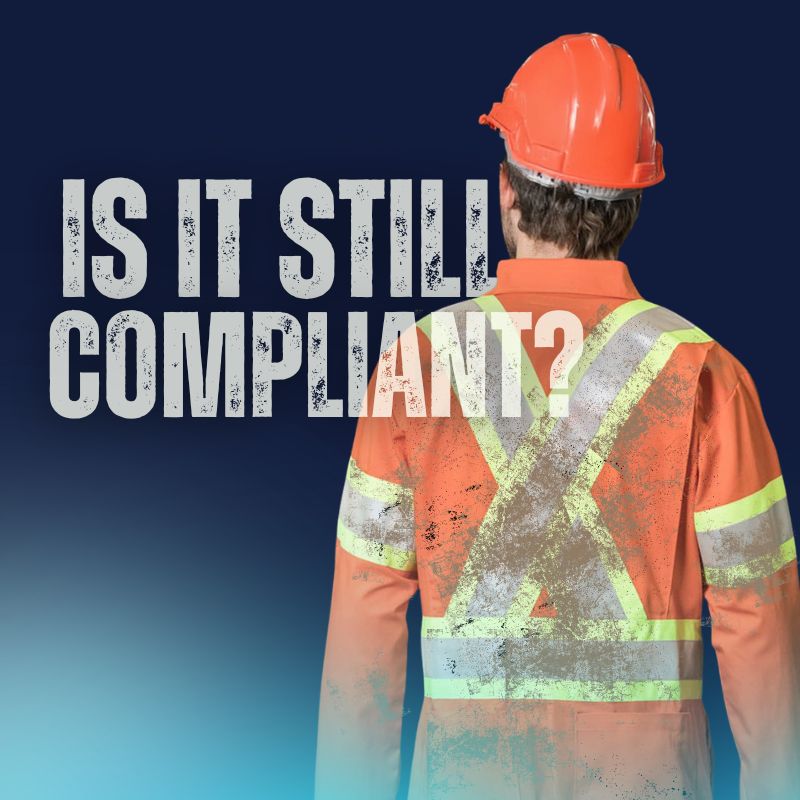The Freshest Updates.
The Loaded Laundry: Q Custom Clothing
Discover how Q Custom Clothing was created as a division of Quintex to meet the demand for high-quality branded apparel. Paul and Justin share its story, growth, and what’s ahead.

You would not expect a disposable raincoat to keep you dry for long — so if CSA-compliant workwear is priced like disposable gear, can it truly offer lasting protection?
In hazardous or highly regulated environments, compliance is not just a safety standard — it is often a condition for site access, contracts, and maintaining smooth operations. While quality protective gear naturally carries a higher cost due to specialized materials and rigorous standards, it is crucial to look beyond price alone. True compliance depends on quality construction, proper garment upkeep, and having the right knowledge and processes in place to ensure standards are consistently met.
A garment might meet CSA standards when it is new — but true compliance depends on how it performs over time. Daily wear, exposure to contaminants, and frequent laundering can all affect a garment’s protective qualities.
High-visibility striping may fade, fray, or peel, reducing visibility and rendering the garment non-compliant. Flame-resistant (FR) fabrics can also lose their effectiveness if exposed to improper detergents, chemicals, or handling.
Maintaining compliance goes beyond the initial purchase — it requires routine inspection, proper care, and timely replacement. Without that, even CSA-labelled garments can fall short of the protection they are meant to provide.

A CSA label on a garment confirms it met safety standards when new — but ongoing compliance depends on how well that garment holds up in the real world. Without proper care and inspection, both high-visibility (hi-vis) and flame-resistant (FR) apparel can lose their effectiveness over time.
For Hi-Vis Garments, consider:
For Flame-Resistant (FR) Garments, ask:
If the answer to any of these questions raises concern, the garment may no longer meet CSA standards — even if the label remains intact. When a service provider maintains uniforms, issues can often be flagged proactively through inspection, mending, or timely replacement before they pose safety risks.

Jobsites in sectors like utilities, construction, and industrial manufacturing regularly enforce strict PPE requirements. If workers arrive without compliant gear, they may be denied entry, causing delays and added costs. Similarly, failed site audits due to non-compliance can jeopardize contracts, result in fines, or even halt operations altogether.
The financial and operational impact of non-compliance far outweighs the cost of investing in quality, CSA-approved workwear, and proper maintenance. Ensuring your team is properly equipped is essential not just for protection, but for keeping your business running smoothly.

When CSA-compliant workwear is priced significantly lower than expected, it is worth asking a few key questions — not to cast doubt, but to ensure you understand what is included.
Consider whether the price reflects:
It is also important to look at the broader contract terms. Are there surcharges, added fees for replacements or damages, or unscheduled price increases built in? Sometimes the cost savings up front are offset elsewhere.
Bottom line: low prices are not always a red flag — but they should prompt a closer look. When safety and compliance are on the line, understanding what you are paying for matters.

When CSA compliance is critical to your operations, it pays to have a partner who understands the full lifecycle of protective garments — from selection through to inspection, maintenance, and documentation. A trusted uniform program provides the oversight and expertise needed to keep your team protected and your business audit ready.
Look for these key features in a compliance-focused provider:
With the right partner in place, compliance is not just a one-time checkbox — it becomes an integral part of your safety culture.

CSA-compliant workwear is essential for worker safety and smooth operations, but true compliance requires more than selecting the right garments. High-visibility gear must stay bright and reflective, while flame-resistant clothing needs proper laundering and inspection to maintain protection. Compliance is not just about safety — it is often required for site access, contracts, and audits. Low-cost options can be tempting, but they may omit crucial elements like inspections, replacements, or verified sourcing. A trusted uniform program provides proactive garment management and full lifecycle support, ensuring your workwear not only meets standards but consistently enforces them.
Ready to strengthen your compliance program? Contact us to start the conversation.

Discover how Q Custom Clothing was created as a division of Quintex to meet the demand for high-quality branded apparel. Paul and Justin share its story, growth, and what’s ahead.